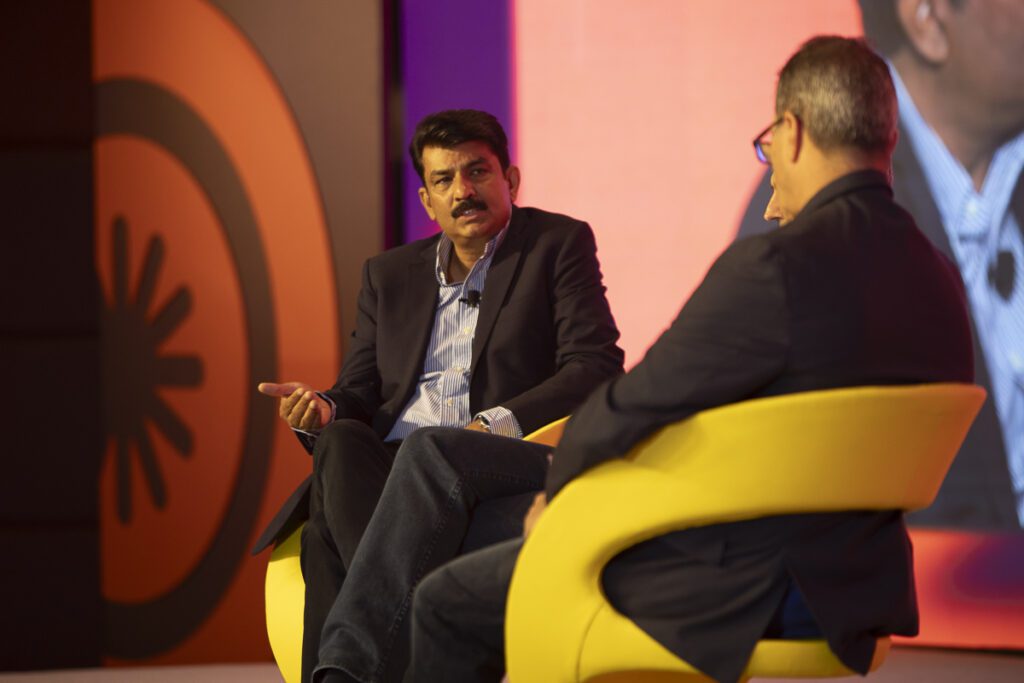Indian online travel agency MakeMyTrip will be resuming its attractions and activities product for travelers, a feature it had paused during the Covid pandemic.
MakeMyTrip Co-Founder and Group CEO, Rajesh Magow, emphasized that these experiences are currently more focused on foreign destinations, as the offerings for domestic destinations are still developing.
That was one bit of news Magow shared in an interview with Skift. We were also interested in what trends he’s seeing as he leads India’s largest online travel agency.
Skift: On news of MakeMyTrip making its products available from 3 to 150 countries, what prompted this move?
Magow: It’s not so much about going global as it is about increasing accessibility to a wider audience. This will help us reach the vast Indian diaspora and enable us to cater to a broader audience, fostering increased inbound travel to India.
Travelers for now would be able to transact only in INR, AED and USD, but work is in progress to allow multi-currency transactions.
Shift in Spending Patterns
MakeMyTrip recently launched the Business Class Funnel. How has the consumption patterns of Indians changed and how do you plan to cater to this demand for premium travel experiences?
This product targeting travelers on long-haul flights or those taking a red-eye, is in its early stages, but it’s gaining momentum. There’s a marked shift in spending patterns. Currently, essential expenses account for 80% of spending, while 20% is for discretionary purposes. By 2030, this ratio is expected to shift to 60:40, doubling discretionary spending.
Looking ahead to 2030, approximately 90 million Indian households will be led by millennials. With increasing incomes and a preference for enhanced experiences over savings, this demographic is influencing consumer behavior. India’s economic evolution also merits attention, positioning the country for a transformation similar to what China experienced.
Impact of Short Booking Windows
Now that summer is here, MakeMyTrip has also gone on air with its recent summer campaign. What are the emerging travel trends? Have booking windows become longer?
India is a last-minute market, where bookings are typically made 15 to 30 days in advance. It’s still early days for summer booking trends. However, weekend getaways are becoming popular and seem to be a permanent trend. Whenever there’s a holiday during the week, closer to the weekend, people book trips promptly, and booking windows for these are shorter.
Booking windows are longer when schools and colleges announce summer vacations, which is the time for families to book trips. Earlier this month, our packages unit held a sale event, which generated significant interest. People saw attractive prices and were willing to book in advance. Such events also help trigger longer booking windows.
Complying With New Tax-Collection Rules
Is there more clarity on Tax Collected at Source (TCS) for travelers now?
It’s important to note that TCS is not an additional tax and is more of a temporary cash flow concern. Banks are responsible for collecting the tax, not travel agents as they have more accurate information. If you use a credit card for other foreign purchases, we cannot monitor that.
To manage expenditures beyond the INR 700,000 ($8,384) limit, we have integrated APIs from banks that inform us whether a specific credit card has exceeded the liberalized remittance scheme (LRS) or spending limit.
However, the INR 700,000 limit has proven effective, and people are getting accustomed to it.
Growth in Religious Tourism
How does MakeMyTrip look at the religious tourism segment? How do you plan to tap into this?
Religious tourism is a rapidly growing segment driven by improved connectivity and enhanced overall experiences. People today visit these places not just for religious purposes, but also to seek historical and cultural experiences.
Individuals from all income brackets — lower, middle, and high — are now exploring these destinations. As infrastructure gradually improves, there are challenges. Ayodhya recently generated substantial interest, but the hospitality sector there is still catching up, resulting in a supply-demand gap. In hindsight, the hospitality industry could have been more proactive in developing accommodations to meet this demand.
There’s also a need to focus on enhancing the overall tourist experience. Road, rail, and air connectivity is improving, and more hotels and homestays are expected to emerge. However, on-ground experiences, such as sightseeing and queue management at sites, require procedural and logistical improvements.
As demand continues to grow and infrastructure development progresses, there will likely be a greater emphasis on improving experiences. Such improvements have already been seen in established religious destinations like Katra, Tirupati and Shirdi.
Bringing Travelers From Smaller Cities
MakeMyTrip recently integrated its hotel product on the Indian Railway Catering and Tourism Corporation (IRCTC) website. Is this an effort to attract new users from smaller cities and expand the customer base?
That’s correct. IRCTC is deeply penetrated in the Indian interiors. The idea behind this initiative was to utilize our existing content by making it accessible to IRCTC’s audience, thereby attracting new users to our platform.
By featuring our hotel offerings on IRCTC, we increase our visibility among their audience. This allows users who encounter our services on IRCTC to easily transition to booking through our platform if they wish to do so.
Get breaking travel news and exclusive hotel, airline, and tourism research and insights at Skift.com.
